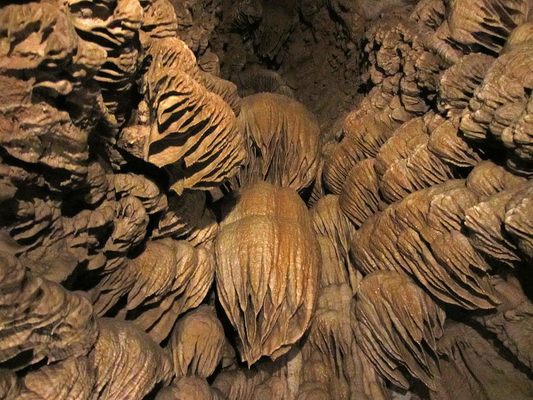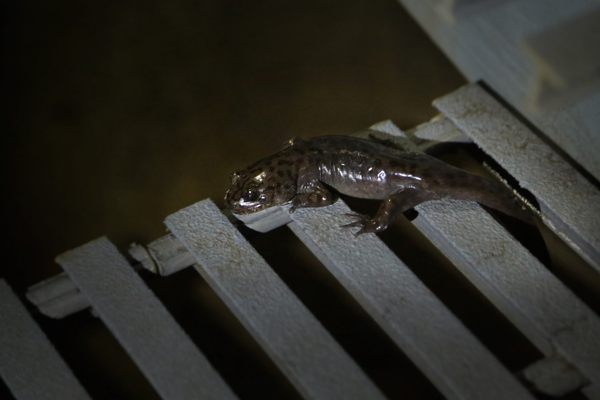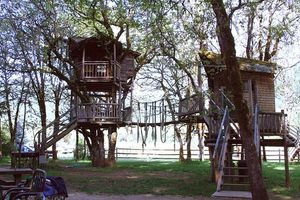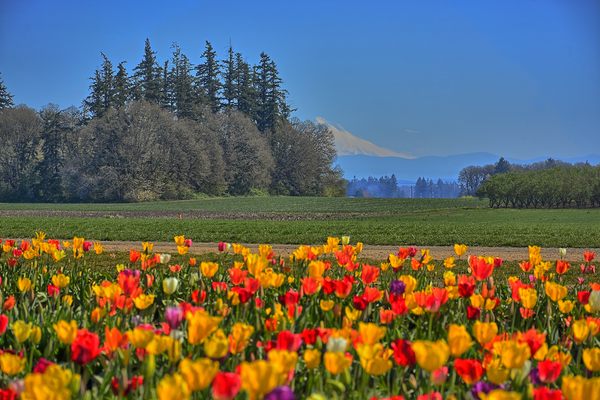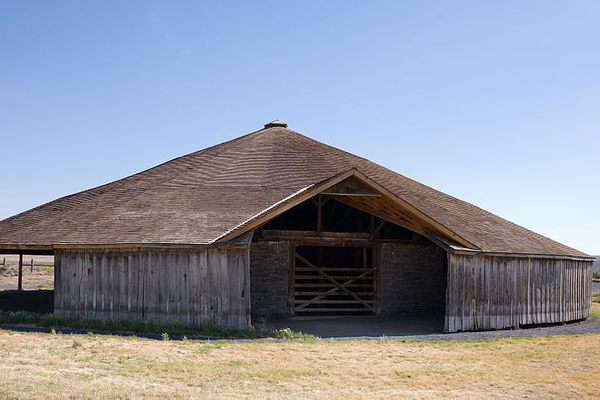About
Descend into a deep, dark world of stalagmites and stalactites flanked by thick walls of natural marble. The Oregon Caves were discovered by Elijah Davidson in 1874 beneath the Siskiyou Mountains in the southwestern region of the state. In 1909, the caves were declared one of only five National Monuments in Oregon. This magnificent point of interest consists of 15,000 feet of subterranean pathways, over 4,000 acres of above-ground trails through old-growth forest, and a historic chateau for rustic relaxation.
The Oregon Caves are a fascinating relic of the primordial world. The product of slow acid water erosion over hundreds of millennia, these spectacular caves are known as the “Marble Halls” of Oregon.
The caves comprise a relatively small 480 acres, but they’re home to a diverse ecosystem of wildlife and, according to SouthernOregon.org, “One of the largest, most pristine, and most complete segments of old oceanic crust in Western America.” They also conceal the River Styx, the nation’s first and only underground ‘Wild and Scenic River’ (a designated waterway belonging to a network of federally-protected rivers).
Guided by a park ranger, 90-minute cave tours enlighten visitors about local geology, subterranean flora and fauna, and the thousands of acres of old growth overhead. Pay a visit to the caves in summer for a special “off-trail cave tour” to learn more about caving as a recreational activity, including basic techniques and conservation sensibility. Candle-lit tours of the caves are also offered in the summer months and around Halloween for an eerie glimpse at how historic cavers experienced this subsurface landscape.
Just outside the caves, the Preserve is comprised of thousands of sprawling acres of old-growth forest, which boast some of Oregon’s largest and most magnificent Douglas fir trees. Scenic hiking trails let visitors choose from multiple natural wonders, including the thickest Douglas fir tree in the state, which boasts a 13-foot diameter, and sublime vistas from Mount Elijah.
When it comes time for a rest, The Chateau at the Oregon Caves is a storied, six-floor cedar bark lodge designed by architect Gust Liam in 1934. Declared a National Historic Landmark in 1987, the chateau is conveniently located in close proximity to the Oregon Caves, and provides quirky amenities such as a large stone hearth, a natural creek that trickles through an on-site restaurant and gift shop, and a notable collection of Monterey furniture (a line of Spanish-inspired furniture unique to California in the 1930s and 40s).
Related Tags
Know Before You Go
The Oregon Caves National Monument & Preserve is located off of Cave Junction/Highway 46, and comes recommended as a pitstop for travelers also visiting Crater Lake National Park and/or Redwood National and State Parks. Guided tours of the Oregon Caves are available for purchase from mid-spring through late-autumn on a first-come, first-serve basis. Self-guided tours of the caves are not permitted. Siskiyou Mountain trails are open year-round, though heavy snowfall may close roads. Visit the Preserve’s website for access to maps, directions, and more information about fees and reservations at the chateau. Prospective visitors should note that the chateau closed in October 2018 for a one to two year renovation project.
Community Contributors
Added By
Published
March 21, 2019
Sources
- https://traveloregon.com/things-to-do/culture-history/historic-sites-oregon-trail/explore-the-oregon-caves/
- https://www.southernoregon.org/places-to-go/rogue-valley/oregon-caves/
- https://www.nationalparks.org/explore-parks/oregon-caves-national-monument
- https://www.nationalparks.org/connect/blog/oregons-marble-caves-and-historic-chateau
- www.nps.gov/orca


